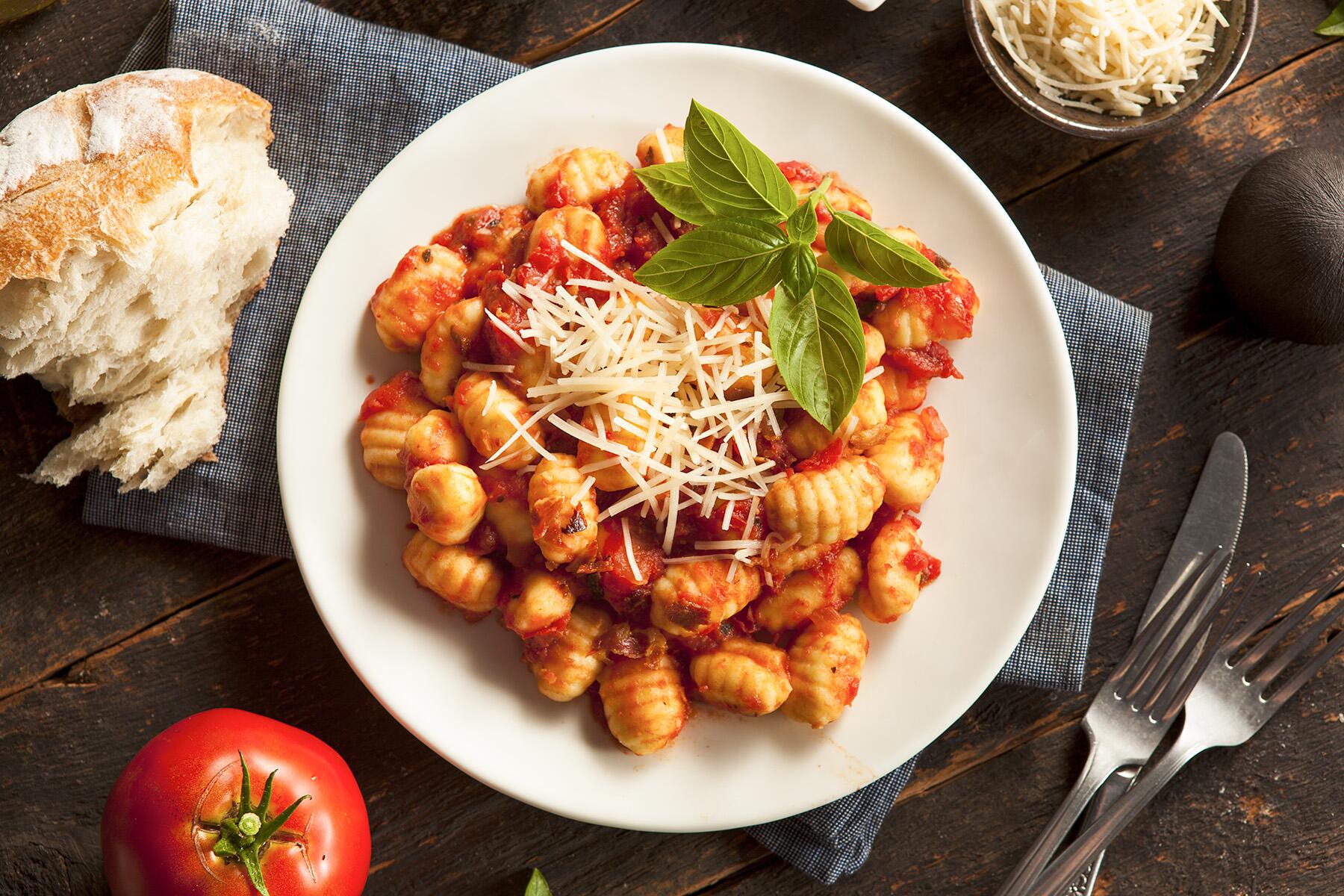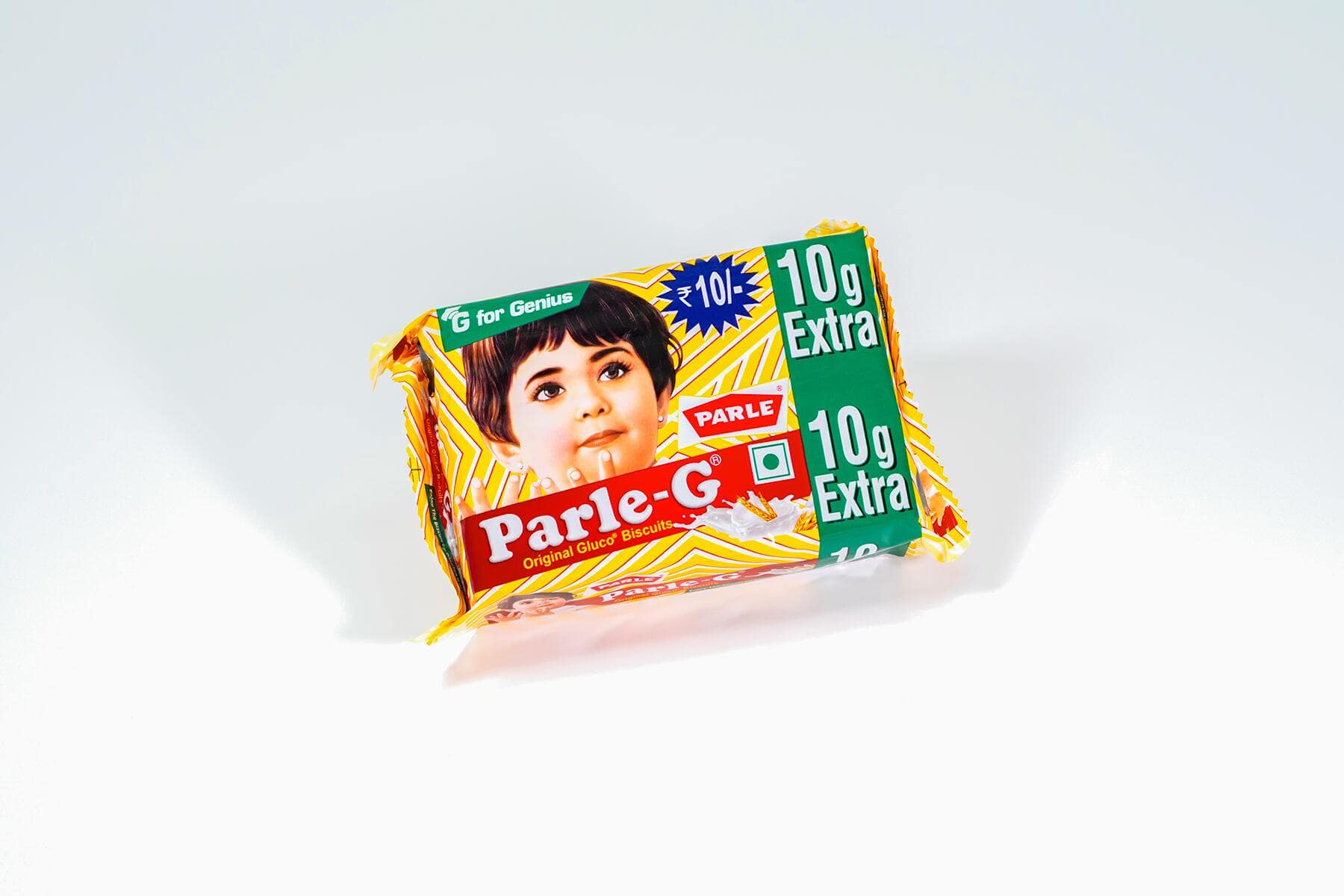It’s time you know about Parle-G.
In the pantry of my apartment, the 800-gram Parle-G pack is never missing from the shelf. The bright yellow plastic packaging with the illustration of a sweet-looking, dark-haired toddler with studs in her ears is classic and unmistakable. She is synonymous with the brand and pops up at tea stalls across the country—chai and Parle-G are an excellent combination that Indians in urban and rural areas swear by.
The Legacy of Parle-G
Every day, office-goers step outside of their glass-and-concrete buildings for a chai and sutta (tea and cigarette) break and walk to the tapris (tea and food stalls) on their perimeter. A companion of this steaming cup of strong, milky tea is Parle-G. The scenes are similar in small towns. In Hampi, Karnataka, after being on our feet all day, when we sat down to rest our soles at a non-descript stall, the request for biscuits was met by a smaller packet. In villages, in metros, on roadside highways, in big supermarkets, Parle-G is a staple. Dependable. Omnipresent. Nostalgic.
Related: Where to Go in India Based on Your Travel Style
The beginnings of the confectionery company Parle go back to 1929. In pre-independent India, founder Mohanlal Dayal Chauhan bought a factory in Vile Parle, Mumbai, which gave the company its name. With a dozen people, he started producing toffees and confectioneries, but it wasn’t until 1938 that Parle Glucose was born.
In the times when British biscuits were prohibitively expensive for Indians, this humble product offered nourishment at a very small cost. The supply of biscuits was affected by World War II, but for most of the past eight decades, it has dominated the market. A lot of credit goes to its marketing over the years: the rechristening to Parle-G, the introduction of the iconic girl on the packet, and the campaigns, including one with India’s superhero Shaktiman.
Recommended Fodor’s Video
However, the price point is at the heart of the story.
The 800-gram pack has 10 individual packets of 16 glucose biscuits each. It is priced at Rs 90 ($1.09), while smaller packs cost Rs 2 ($0.024), Rs 5 ($0.061) and Rs 10 ($0.12). The MRP hasn’t drastically increased; it was Rs 4 in 1994 and jumped to Rs 5 in 2021 due to inflation.
Consider what this brand has meant for a people that made meals out of the packet. Mothers who didn’t have expensive baby formula have used these biscuits as a substitute. It’s not mere reminiscence. In 2020, India shut down and all trains and buses stopped. People were advised to stay home. But in a gut-wrenching consequence, migrant workers who had left their towns for cities in search of work had to trek miles to go back home. Bereft and out of options, their meals also constituted Parle-G biscuits.
If it is a symbol of struggle, it is also a unique equalizer. Last year, a photograph of an airline MD dipping this rectangular, golden biscuit in his tea while seated on a plane went viral on Twitter. Much like tea, it unifies.
My fellow passenger on a @IndiGo6E BLR-DEL flight this week… Billionaire Rahul Bhatia, Promoter & MD, IndiGo, enjoying his Parle-G dipped in tea.
Shows you don’t have to be Richard Branson or V Mallya to build a successful airline with 57% market share. pic.twitter.com/K2F5bWXUxU
— Y P Rajesh (@YPRajesh) July 22, 2022
Parle, as a company, also manufactures other biscuits and cookies loved by Indians, including Hide & Seek, Monaco, Krackjack, and Marie. Many are premium products for the rising middle class. Candies and toffees haven’t been dropped from the catalog either. Parle-G remains its bestseller though and according to the company, it is the largest-selling biscuit in the world. Parle has 130 factories in the country and 400 million Parle-G biscuits are baked every day. According to the BBC, it is available in 100 countries and 4,500 biscuits are consumed every second.
Related: 10 Indian Towns That Look Like They’re Stuck in Time
It survived World War II, witnessed India’s independence from the British Empire, fought for market shares in an overpopulated biscuit market, and reinvented itself multiple times to stay relevant.
During the lockdowns in 2020, the brand celebrated record sales. Multiple reasons explained the surge. It was used in relief packages due to its low price and longer shelf life. Comfort and nostalgia should also be factored in as the country turned to long-lost pastimes of cards, carrom, and Ludo. Indians stocked up for unpredictable months at home and desserts with this biscuit got the elusive thumbs up from social media.
Related: The Pandemic Has Reminded Me How Much I Love Local Markets
There’s also the meme-ification of the biscuit that has found takers in this GIF-loving web world. Dunking Parle-G in hot tea and coming up with just half a biscuit in hand and the rest at the bottom of the cup—it’s an emotion that Indians can truly understand and share, more so now as a meme.
For people like me, Parle-G is a wistful reminder of my childhood and a hilarious meme idea. For millions, it’s a basic necessity. And currently, it is bearing the burden of economics.
The iconic Vile Parle factory in Mumbai shut down in 2016, breaking the hearts of countless Mumbaikars who had grown accustomed to the sweet aroma of freshly-baked goods. Five years ago, higher taxes on biscuits were introduced and Parle responded by reducing the number in the packet to maintain the same price. However, in 2021, the brand increased the price when the cost of sugar and wheat went up after 25 years. It has also shrunk in size considerably. The impact will mostly be felt in the rural areas that form 55% of its market.
In 1929, Parle Products built its foundations on the pillars of nationalism and self-reliance during India’s struggle for independence. It fed common, everyday people; the homegrown brand was a beacon in the shadows of pricey imported products.
The nation and its needs have grown, but the Parle-G girl has been frozen in time since the 1960s. Today when the market is oversaturated with big-brand cookies, global premium wafers, and local bakery products, Parle-G still has a loyal customer base. It is sketched into the collective consciousness of everyday folks who remember what this biscuit has stood for since pre-independence days: hope, sustenance, and dream of a self-sufficient India.
Sentimentality aside, it’s an everyday essential in many homes. As long as it’s on the shelves, it is within reach of those who need it most, the ones it was made for.
Related: Travel Etiquette: 10 Things to Consider When You Visit India




